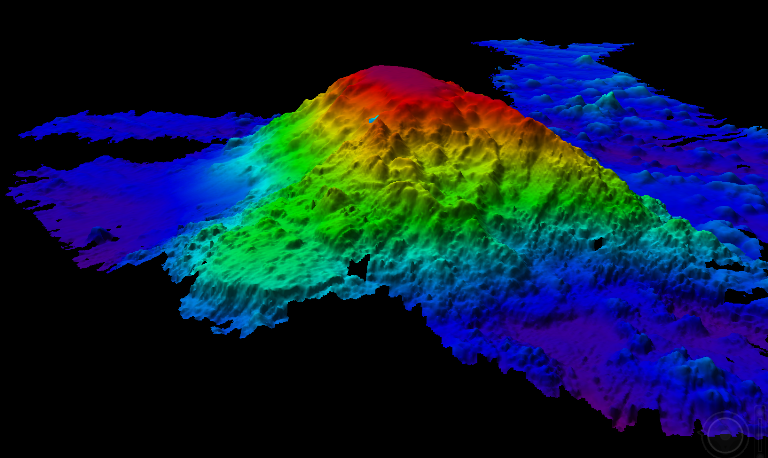The Musicians Seamounts
A seamount is an underwater mountain formed by volcanic activity. The biological richness of seamount habitats results from the shape of these undersea formations. Thanks to the steep slopes of seamounts, nutrients are carried upwards from the depths of the oceans toward the sunlit surface, providing food for creatures ranging from corals to fish to crustaceans.
The Musicians seamounts comprise a major volcanic province that extends northwesterly from just north of the Hawaiian ridge. Seventeen prominent seamounts lie along a 1,200-km northwest-trending line which marks the western limit of the Musicians province and coincides with a line along which the large east-west fracture zones in the northeast Pacific.
The oldest part of the Musicians Ridge formed approximately 90 million years ago but recently found samples are only about 50 million years old, featuring a different geochemistry. Vulnerable spots in the Earth’s plates crack when they are stressed, in this case due to movement of the Pacific Plate which started to dive or submerge back into the Earth’s crust at its northern and western edges around 50 million years ago.
New estimates suggest that, taken together, seamounts encompass about 28.8 million square kilometers of the Earth’s surface. That’s larger than deserts, tundra, or any other single land-based global habitat on the planet.


(Source: Seamount Biogeosciences Network—Seamount Catalog, NOAA—National Ocean Service, ‘Musicians seamount province and related crustal structures north of the Hawaiian ridge’—Marine Geology Volume 10, Issue 2, February 1971, Pages 89-111)